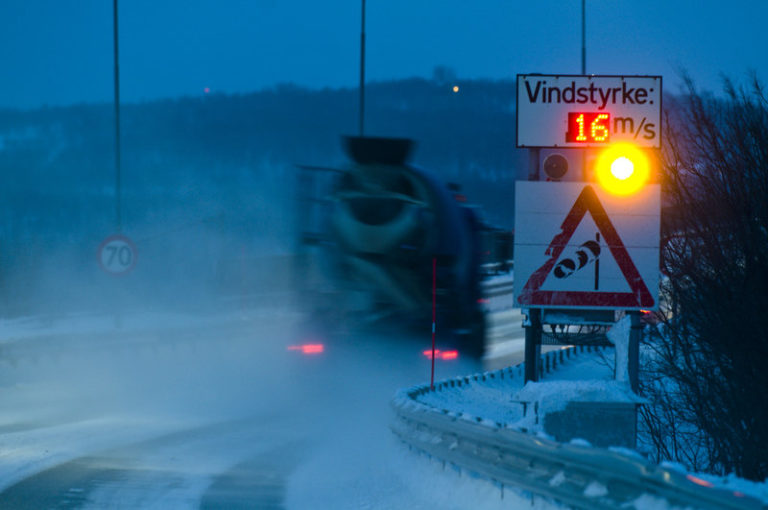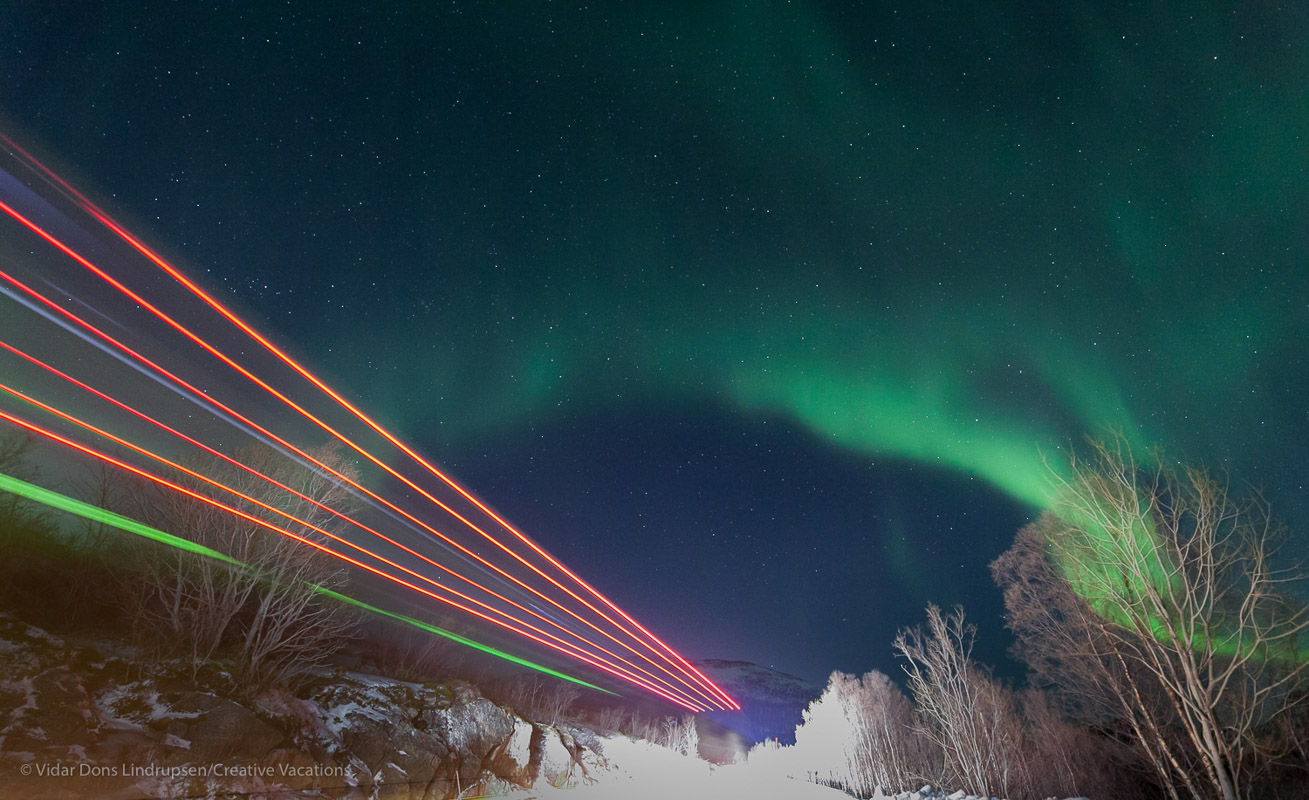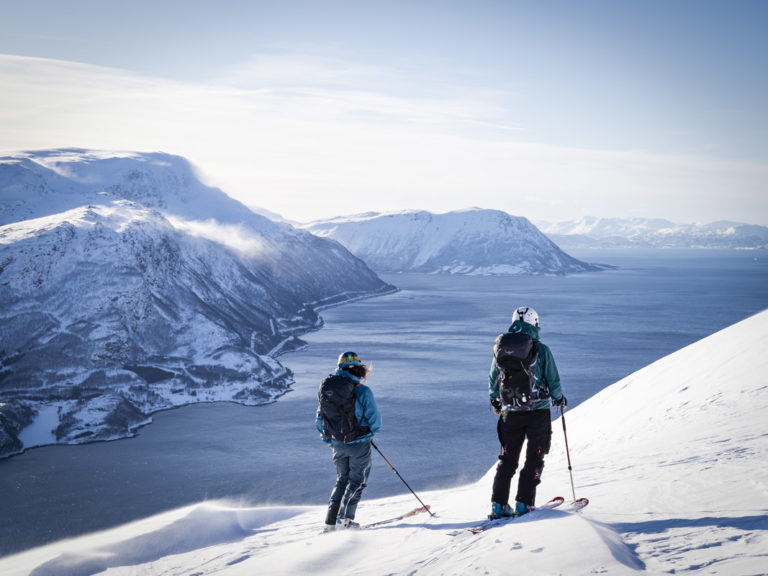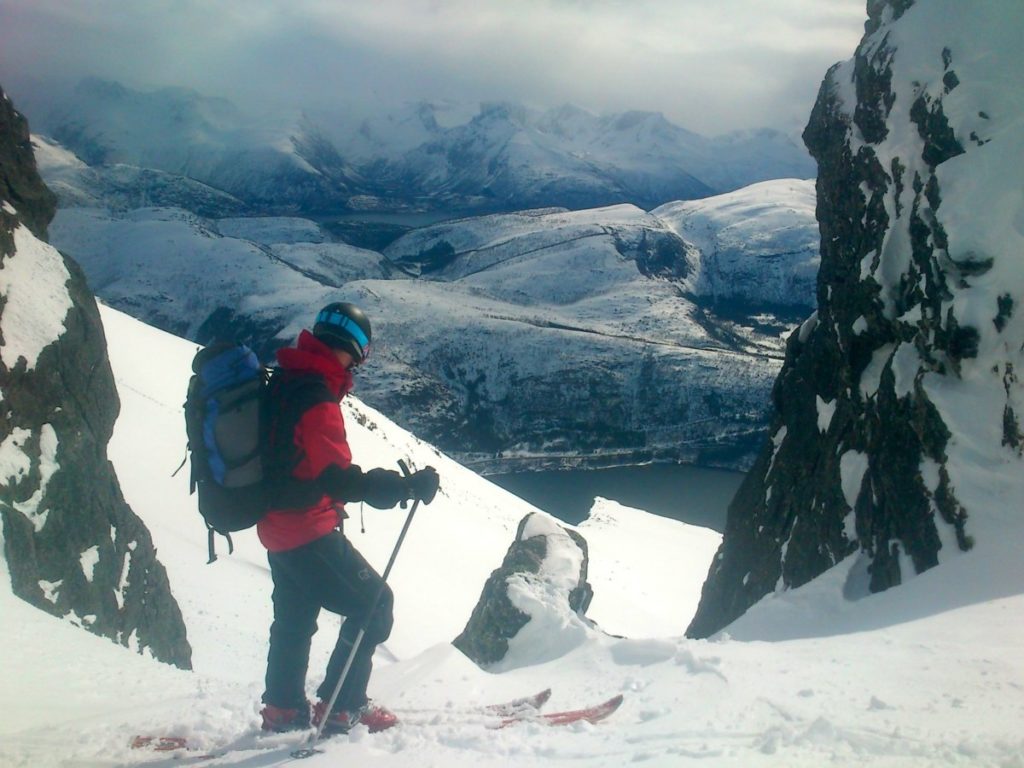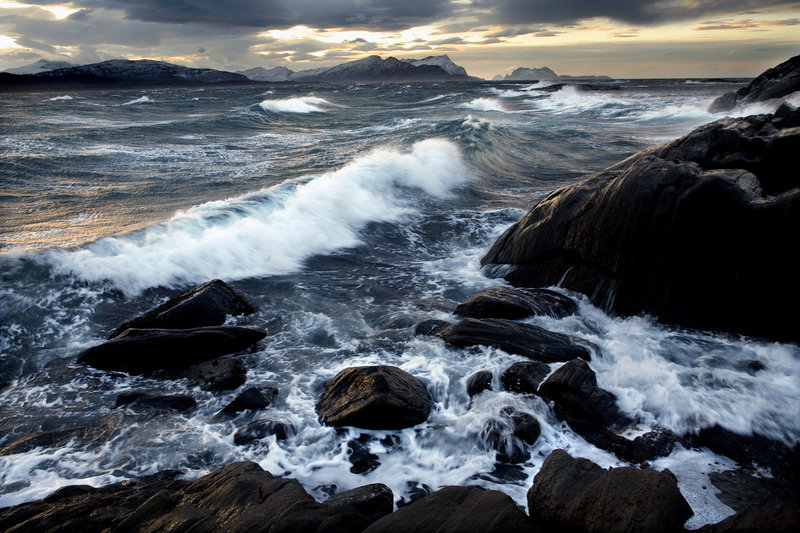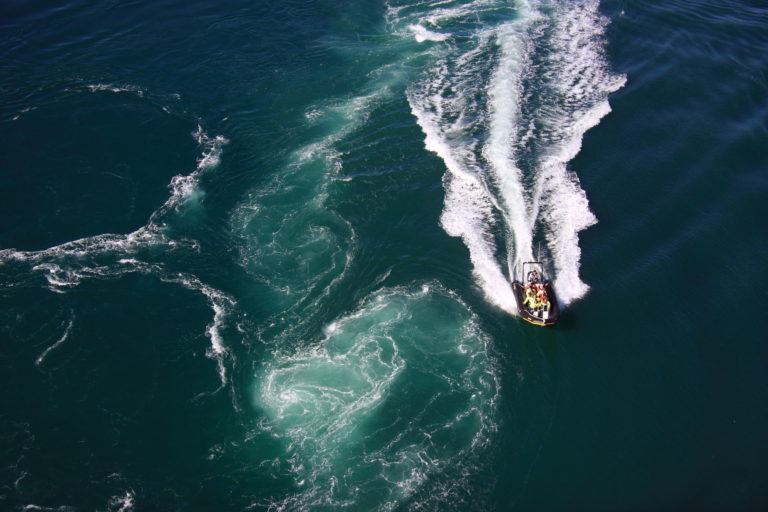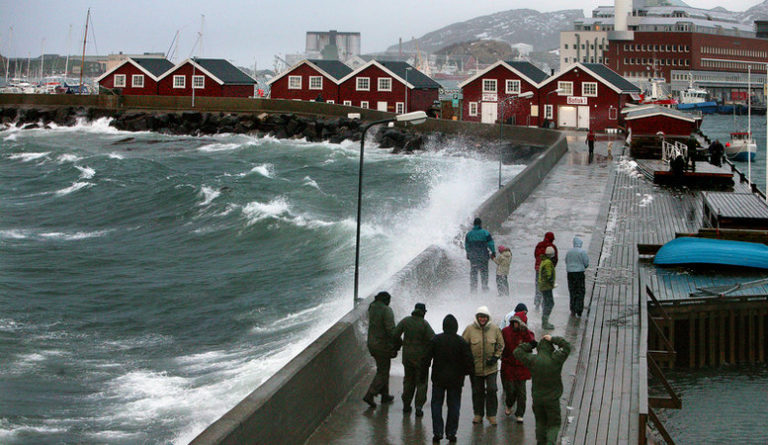The average tourist in Northern Norway visits inhabited areas and only goes out into wilderness areas on organised tours with guides, very often wearing hired clothing. The biggest risk is slipping on the sheet ice in the city streets. You can avoid this by strapping spikes onto your shoes — you can buy the spikes everywhere and they can make life so much easier and more comfortable in the cities.
Only drive when the conditions are right
Driving in winter is also surprisingly easy. Hire cars are fitted with studded tyres or good-quality winter tyres, there isn’t much traffic and roads are regularly cleared and gritted. However, storms and bad weather can strike Northern Norway at short notice. The best way to prepare for this is to allow plenty of time so that you can sit out the bad weather. Always have extra food and warm clothing in the car with you. See also the paragraph on “Storms and bad weather”.
Skiing is a sport not without risk
Long skiing trips over white plains in the wilds of places like Saltfjellet, Inner Troms and the Finnmarksvidda plateau in March and April are a dream for many people. However, bad weather, inadequate equipment and avalanches have cost many people their lives. It’s wise to have some experience and your equipment should be in good condition. There is some excellent information on the Norwegian Trekking Association’s extremely informative website:
- The Norwegian Mountain Code was revised in 2016.
- What to pack for the mountains.
If you want to experience the skiing dream but don’t have the equipment or the experience, you could always try a day trip on prepared trails. There’s no danger of avalanches here and there are always people nearby who can help.
Off-piste and backcountry skiing are more risky than sticking to trails
Swooping down a thousand-metre mountainside is every off-piste skier’s dream. However, in recent years there have been several fatal accidents in the mountains of Northern Norway, involving locals and tourists alike. A wonderful gully of powder snow and steep, chalk-white walls can easily end in a sheet of ice caused by a spell of mild weather. Reading and understanding avalanche reports requires knowledge and experience of mountain conditions. We therefore urge anyone who is at all uncertain to join an organised trip with a guide. Under no circumstances should inexperienced skiers go skiing on their own — it’s as simple as that!
- Visit Norway has a thorough instruction on their website
- Varsom.no gives avalanche danger updates and general weather info
- Troms county has defined 38 avalanche graded tours (Norwegian only)
Film by: Johan Wildhagen/@NveNo In collaboration with @visitnorway
Storms and bad weather can come without warning
A few times every winter, there’s an extreme weather warning, and named storms sweep in from the sea. Mountain passes are closed, airline Widerøe cancels its flights to coastal airports and Hurtigruten boats stay in port. Sometimes there are even power cuts. In these situations, you must cancel your activities, rebook your tickets and stay indoors. That’s what the locals do — they’re aware of the havoc that these storms can wreak.
- yr.no provides information about the weather.
- Traffic Information Centre inform you of closed roads.
- Hotels and guesthouses, petrol stations and public transport providers usually have up-to-date information and are happy to advise you.
Deep sea fishing in winter can be a challenge
Deep-sea fishing can be hazardous, especially in winter, due to bad weather and insufficient boating experience.
- Lifejackets are, of course, compulsory. This brochure will tell you why:
- The Norwegian Maritime Authority have information on boating for tourists.
Other information to take into account
- On Svalbard, polar bears are a constant danger. If you can’t shoot and don’t have a weapon, you should never leave Longyearbyen on your own. The alternative is to go on an organised trip. On the Northern Norwegian mainland there are no animals that present any danger worth mentioning.
- Ice on fjords, lakes and rivers is not safe, particularly in autumn when it is starting to freeze, and in the spring when it is starting to melt. There are no real guidelines or aids to help you here, but the locals in the area generally have an informed opinion.
- When you are outdoors, hypothermia can be a problem. It’s a good idea to read our section on the correct winter clothing to wear.
- If you download the app Hjelp113 on your mobile phone, you save valuable seconds when ringing the emergency services.


